By Almudena Rodríguez Guridi
The Thyssen-Bornemisza Collection offers a step by step history of the evolution of painting in the Low Countries from the 15th to the 20th centuries, including an outstanding group of works from the 17th century, which is a school of painting poorly represented in other Spanish collections.
In order to pursue this subject, the present route will introduce the artists in question through fourteen selected paintings. It starts with works from the 15th century when the spread of the use of the oil technique offered painters a new way of representing reality and one in which detail and precision were fundamental. This is evident in the works by Jan van Eyck, Rogier van der Weyden, Hans Memling, Joachim Patinir and others.
From the late 16th century and throughout the 17th century a range of subjects began to be depicted by artists working in both the Southern Provinces (Flanders) and the Northern Provinces. The Thyssen-Bornemisza Collection has paintings by the leading Flemish artists of this period — Rubens, Van Dyck and Anthonis Mor — as well as a notably compre-hensive collection of paintings by Dutch artists — Frans Hals, Rembrandt, Nicolas Maes, Jacob van Ruisdael and Willem Kalf — who worked in genres such as portraiture, scenes of daily life, landscape and still life. These themes were all particularly popular with middle-class mercantile clients who were interested in decorating their houses with works of this type, resulting in a flourishing art market in Dutch cities.
Our survey ends with Dutch and Belgian artists of the 19th and 20th centuries, represented in the Collection by names of the stature of Vincent van Gogh, Anton Mauve, James Ensor, Piet Mondrian and René Magritte.
Tour artworks

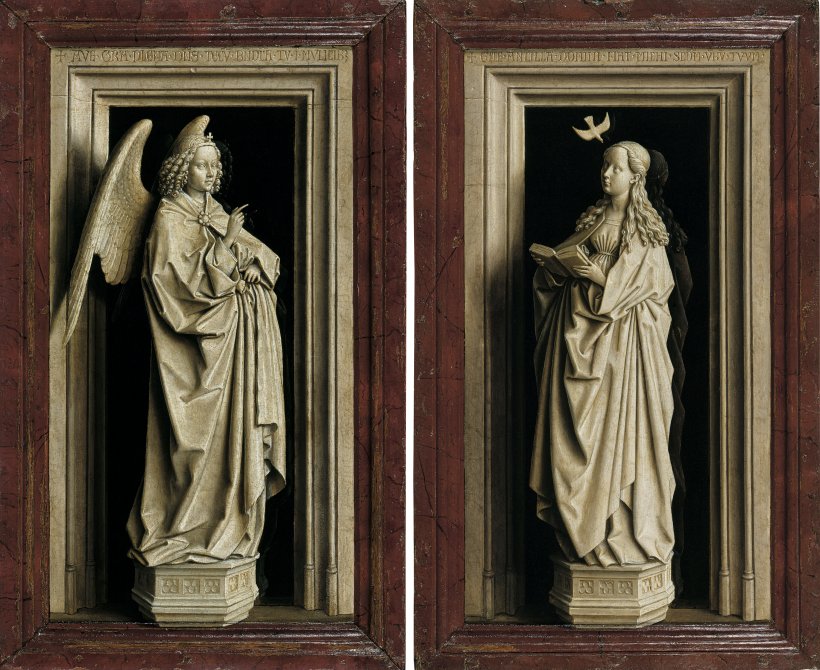
Jan van Eyck
The Annunciation Diptych
ROOM 3
In the first half of the 15th century the painter Jan van Eyck worked in the city of Bruges in Flanders, which was at that time one of the wealthiest and most prosperous in Europe due to its flourishing commercial activities. Painted on panel using the recently invented technique of oil painting that allowed for tonal gradations and precise detail, this work reveals the artist’s remarkable ability to model the volumes of the figures through contrasts of light and shade.
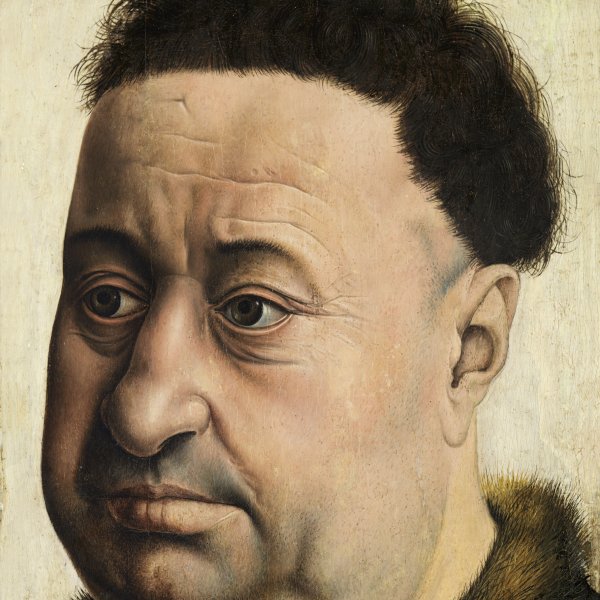
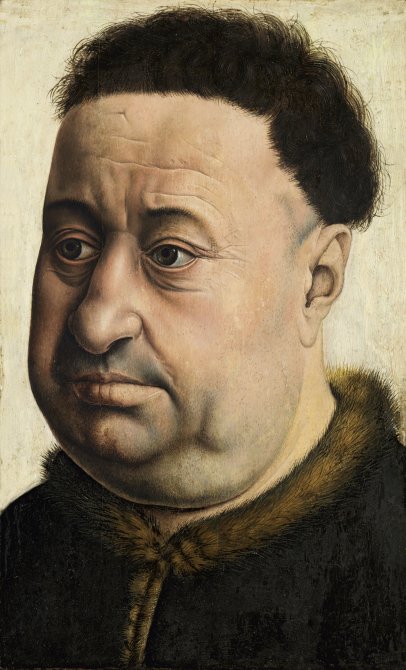
Robert Campin
Portrait of a Stout Man. Robert de Masmines (?)
ROOM 5
Together with van Eyck, Robert Campin was one of the great pioneers of Flemish painting. This sitter is depicted in a life-like manner devoid of any type of idealisation, reflecting the artist’s desire to offer a faithful reproduction of reality. The technique of oil painting allowed Campin to represent the hair and the fur of the coat in a highly detailed manner and to model the face through subtle tonal gradations.
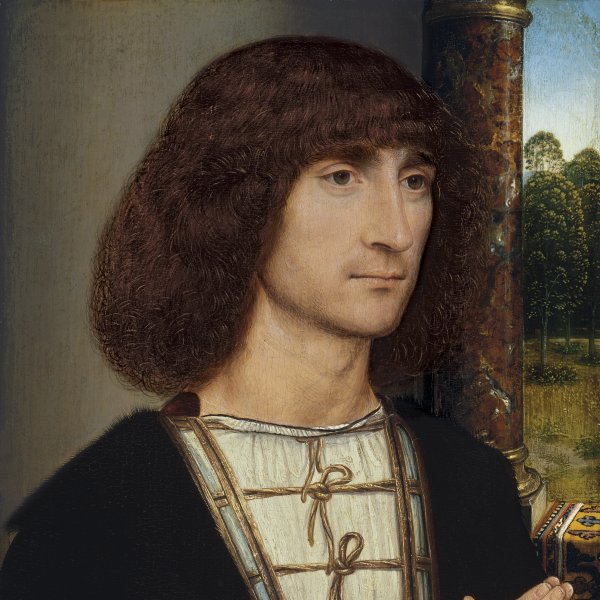
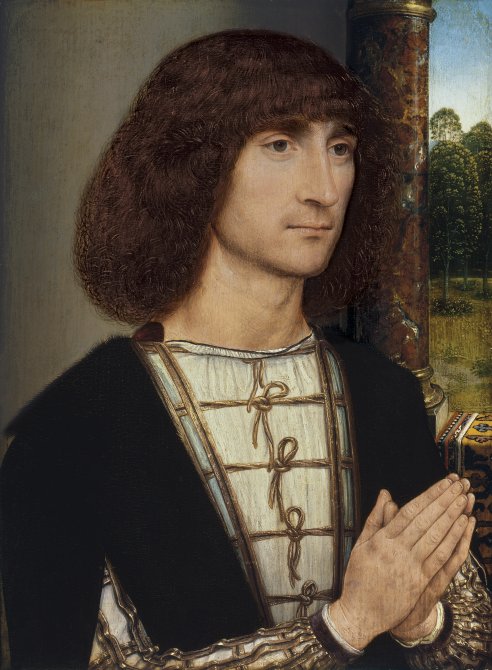
Hans Memling
Portrait of a Young Man praying (recto)
ROOM 5
Hans Memling represents the evolution of portraiture in the Low Countries, where depictions of sitters evolved from images of the face alone to include the bust and arms. The inclusion of an open window giving onto a landscape, which creates a sense of depth in the composition, is characteristic of Netherlandish painting.
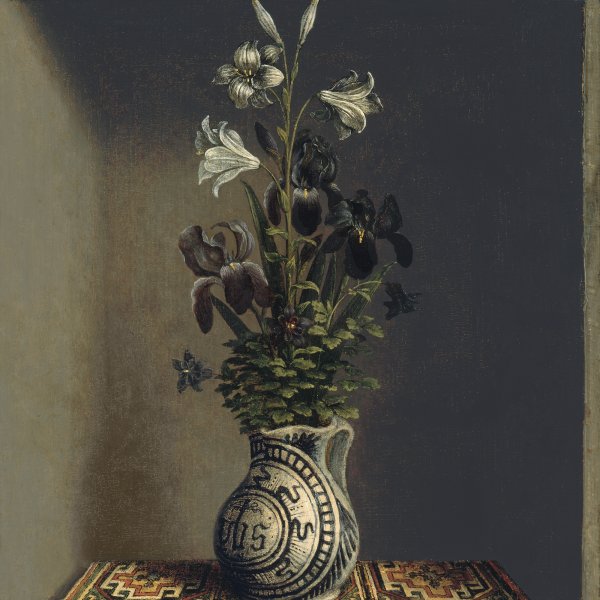
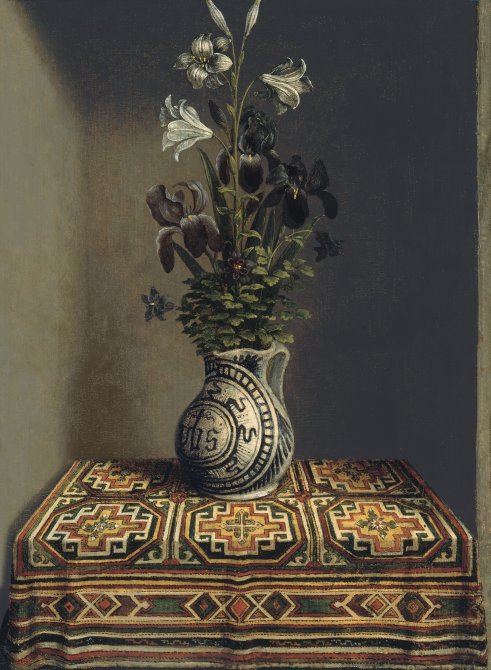
Hans Memling
Flowers in an Jug (verso)
ROOM 5
On the reverse of the panel is a vase of irises and lilies, symbols of the Virgin Mary. The panel was part of a diptych which originally had a depiction of the Virgin on one panel and this praying donor on the other.

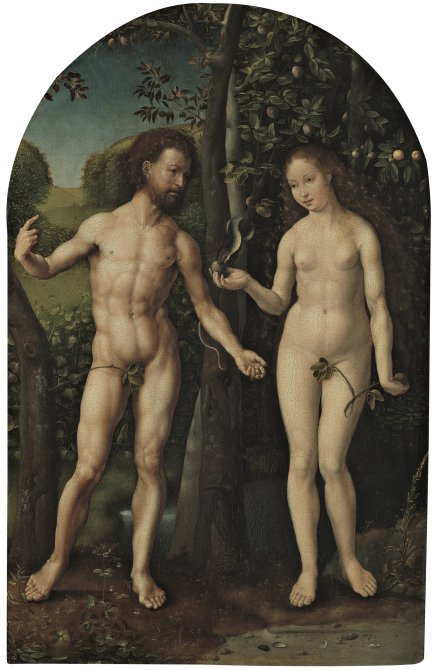
Jan Gossaert
Adam and Eve
ROOM 10
Jan Gossaert, also called Mabuse, was one of a group of painters known as the Romanists who introduced the aesthetic of the Italian Renaissance into the Low Countries. Like many of the artists of this group Gossaert travelled to Rome where he studied and drew the city’s classical ruins and its buildings and monuments. Gossaert’s interest in classicism is evident in both the composition of this work and in his interest in depicting the nude, a subject that he was the first Netherlandish artist to depict.

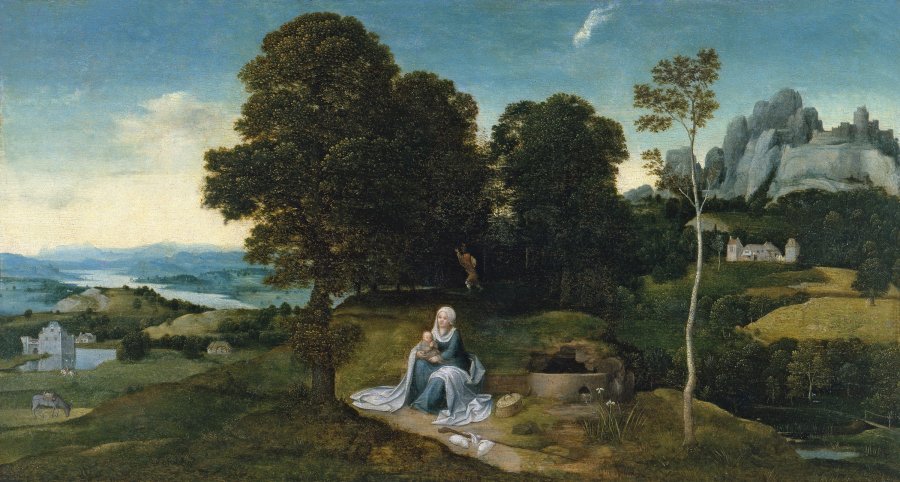
Joachim Patinir
Landscape with the Rest on the Flight into Egypt
ROOM 10
Considered the first landscape painter, Joachim Patinir used this element in his works as more than a background for a religious scene, conceding it a degree of importance that results in it being more important and on occasions occupying more space than the principal subject. A high viewpoint and distant horizon allow the painter to depict the trees, mountains and other elements in the landscape in great detail and within a sweeping panoramic view. The use of successive receding planes, starting with a grey-brown one in the foreground followed by green tones in the middle ground and subtly graduated shades of blue in the background increase the sense of space and pictorial depth.
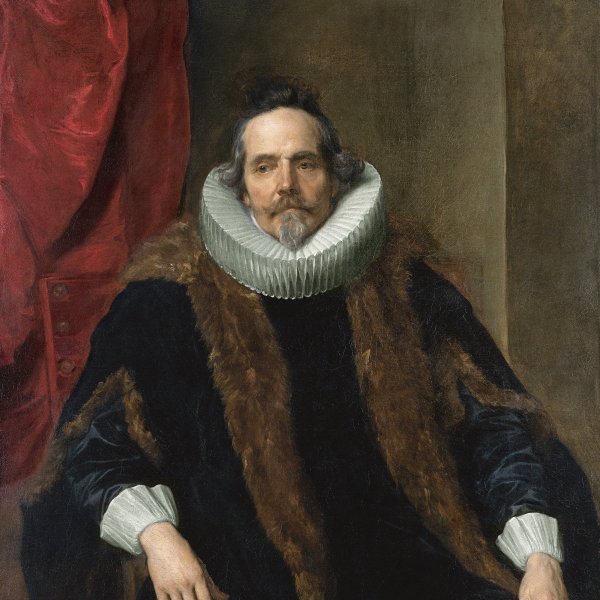
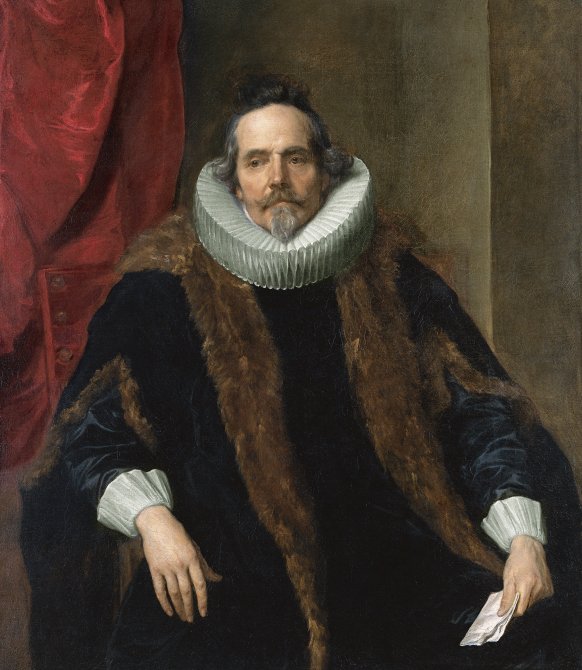
Anthony van Dyck
Portrait of Jacques Le Roy
ROOM 19
Together with Rubens, Anthony van Dyck is one of the great masters of Baroque painting. Although Flemish, in the last years of his life he worked in England as court painter. This portrait is a good example of the dignity and elegance with which he presented his sitters, among whom Jacques Le Roy was a leading citizen in the wealthy city of Antwerp. Van Dyck’s style follows that of his master Rubens and the great Venetian painters such as Titian, who used vivid colours and a loose brushstroke.
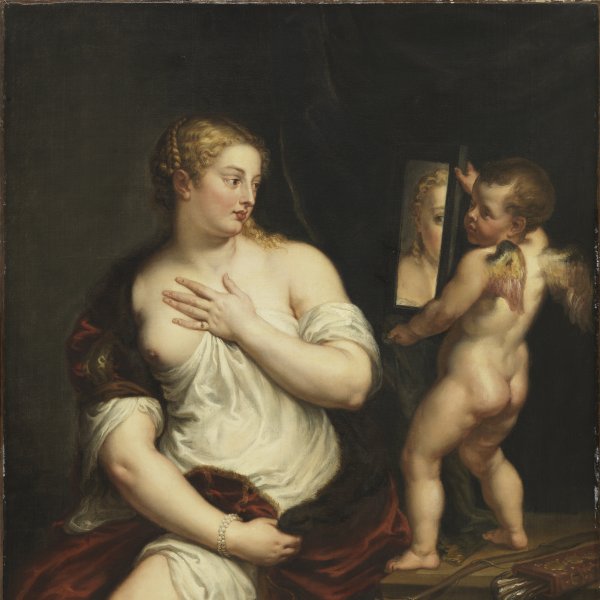
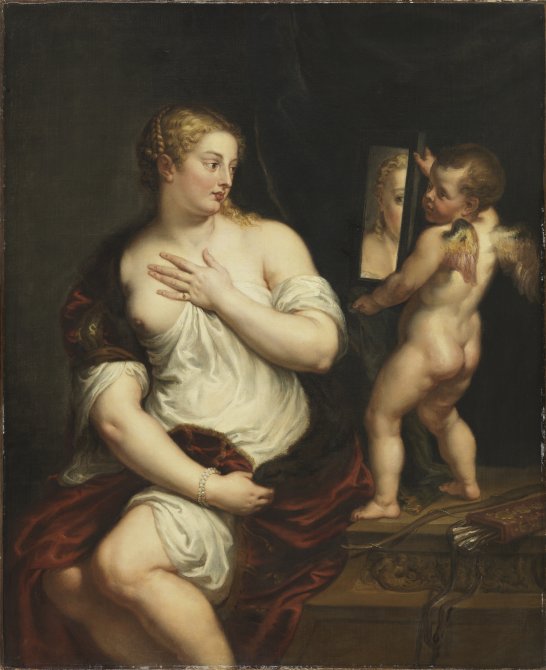
Peter Paul Rubens
Venus and Cupid
ROOM 19
Rubens is the great painter of the Baroque age. He trained in Italy, where he developed a passionate interest in Titian, executing a number of copies of his works. Rubens went on to develop a highly individual style characterised by the opulent concept of beauty for which he would become so celebrated. In this work the rich contrasts of colour applied with loose brushstrokes and a brilliant type of lighting that illuminates Venus’s body are characteristic of his distinctive style. The Museum’s collection has three further works by this Flemish artist.

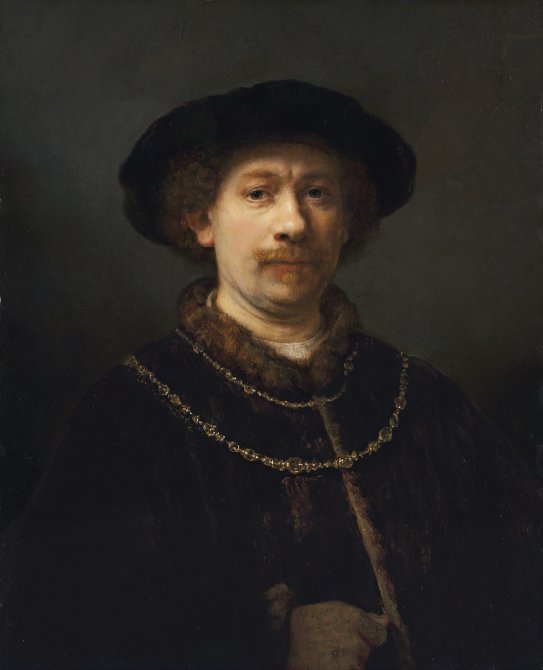
Harmensz. van Rijn Rembrandt
Self-portrait wearing a hat and two Chains
Not on display
Rembrandt was the leadin g dutch painter of the 17th century. While he worked in a wide range of genres, it is portraiture that best reveals his remarkable technique and powers of observation. Rembrandt painted himself on numerous occasions throughout his life. This image was painted after the death of his wife at a time when his career in Amsterdam had begun to decline. Rembrandt looks at the sitter with a serious, melancholy expression while the intense light illuminates his face so that it stands out against the dark background.
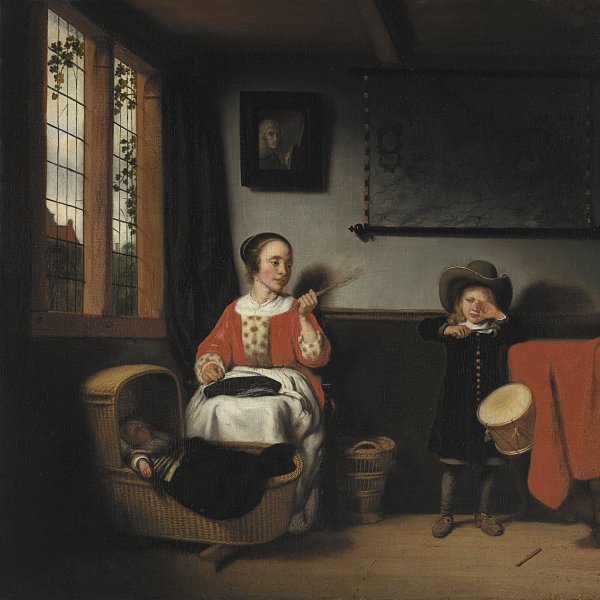
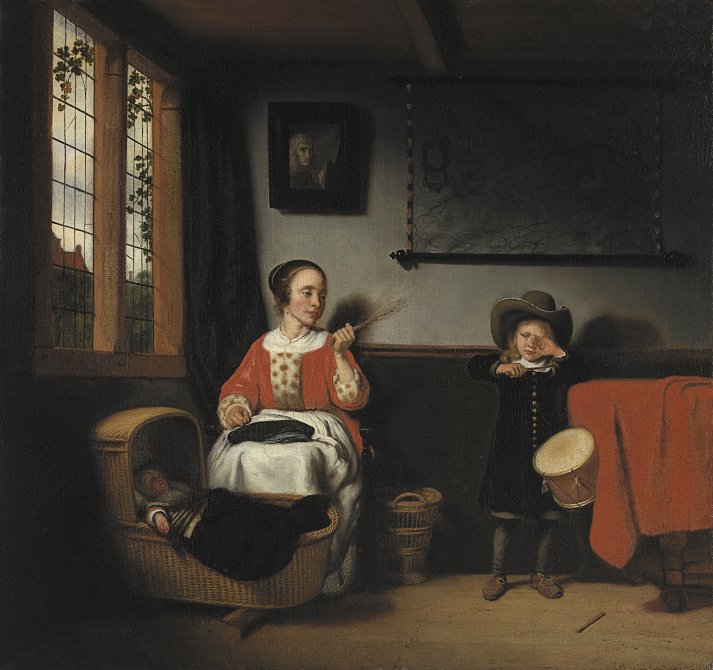
Nicolaes Maes
The Naughty Drummer
ROOM 25
Maes trained in Rembrandt’s studio where he learned to make full use of the effects of chiaroscuro. He specialised in portraits and genre scenes that offered realistic depictions of daily life in 17th century Holland. This small format work was intended to decorate the house of a middle-class mercantile client. It depicts a mother chastising her son in an interior flooded with light that enters through the window. In the mirror we see the reflection of the artist himself, suggesting that the painting may depict his own family.

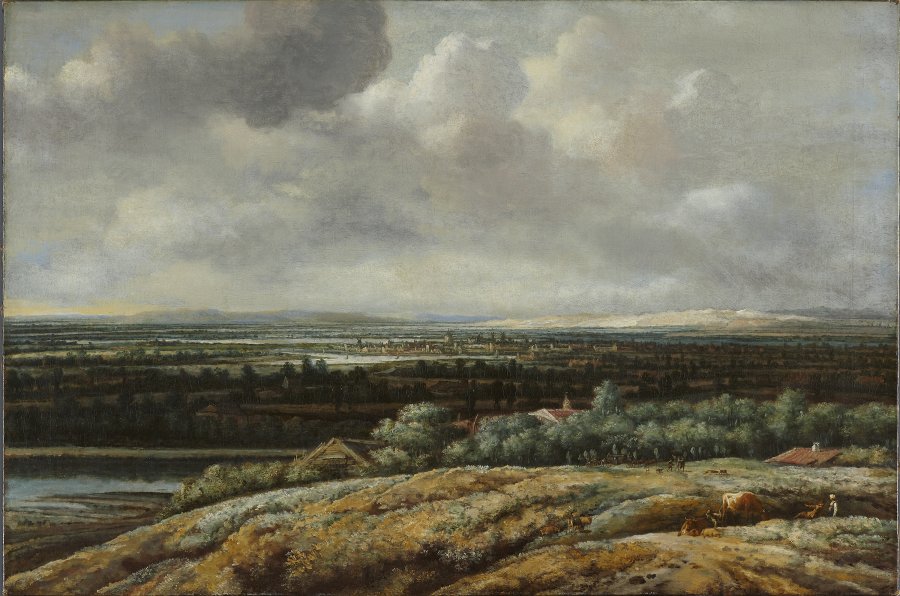
Philips Koninck
Panoramic Landscape with a City in the Background
Not on display
Philips Koninck specialised in panoramic landscapes with a high viewpoint. The horizon line divides the scene so that the sky occupies most of the composition. The dark clouds that contrast with the areas of blue sky cast shadows on the fields, which, in turn, create the impression of depth through their alternation with lighter areas. Together with genre scenes and still lifes, landscape was one of the subjects most favoured by Dutch painters of this period.
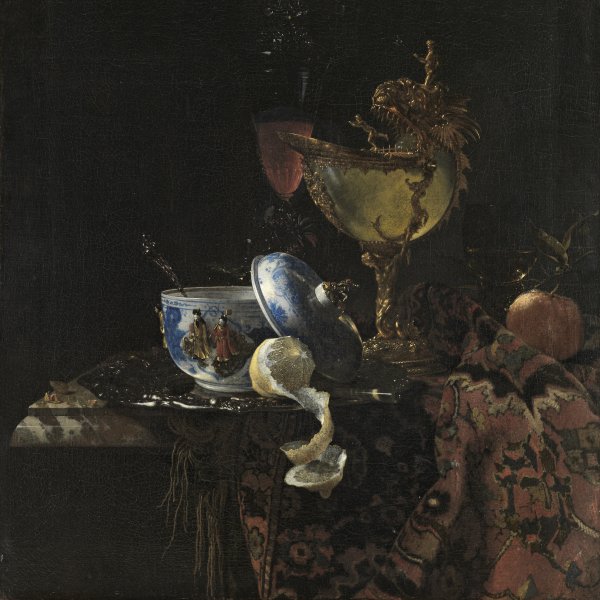
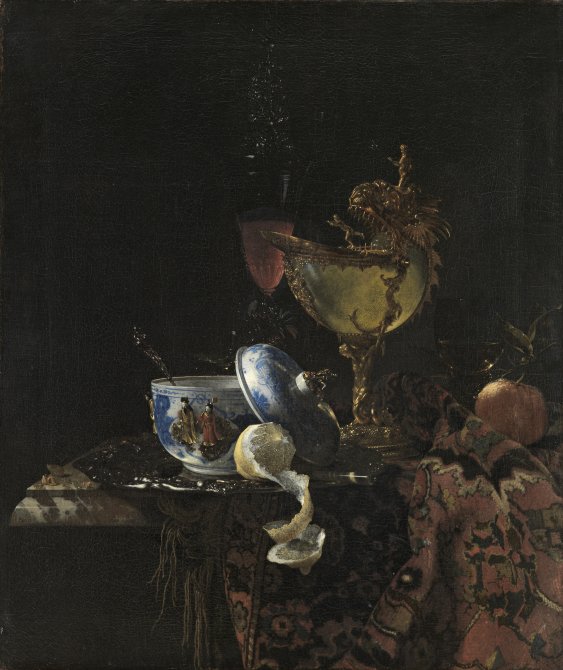
Willem Kalf
Still Life with a Chinese Bowl, Nautilus Cup and Other Objects
ROOM 21
Willem Kalf’s still lifes are celebrated for their enormous refinement and sophistication. In order to achieve this effect the artist made use of costly, exquisite objects such as the Middle Eastern carpet, rare pieces of porcelain and an extremely valuable nautilus cup seen here, which also appears in the other two works by Kalf in the Collection. We also see a watch, symbolising the passing of time and the fleeting nature of life. The highly detailed and meticulous technique and the interplay of light reveal the different textures of the objects depicted.
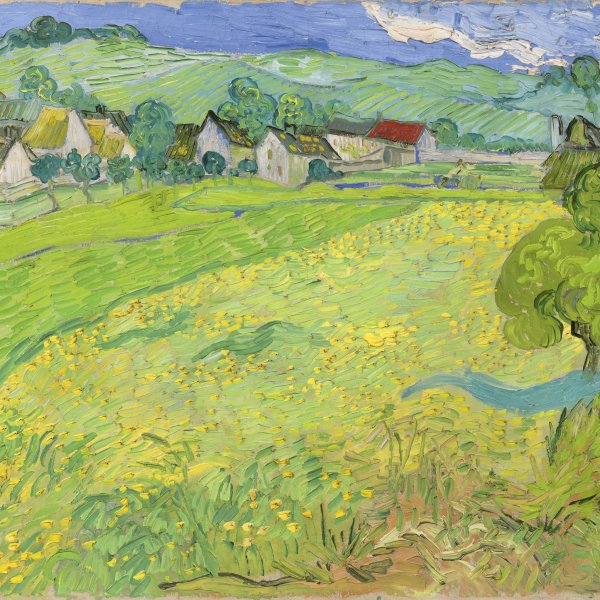
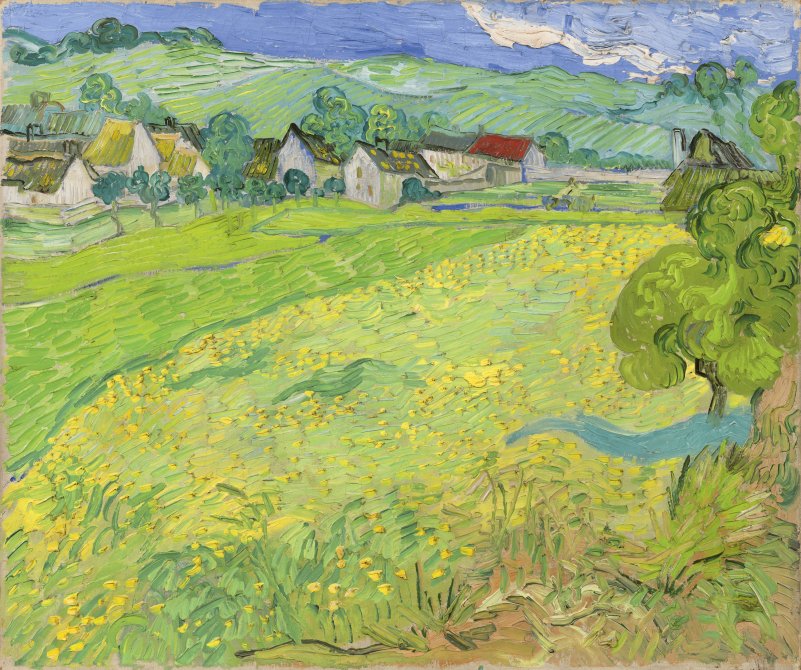
Vincent van Gogh
Les Vessenots in Auvers
ROOM 34
In 1886 the dutch painter Vincent van Gogh moved to France where he would die four years later. During his lifetime Van Gogh’s art was not appreciated and he only sold one painting. The support of his brother enabled him to continue painting in his highly unique style, interpreting reality through colour as a projection of his state of mind. Van Gogh applied the pigment with short, rapid and heavily charged brushstrokes. He painted this canvas a few weeks before committing suicide.

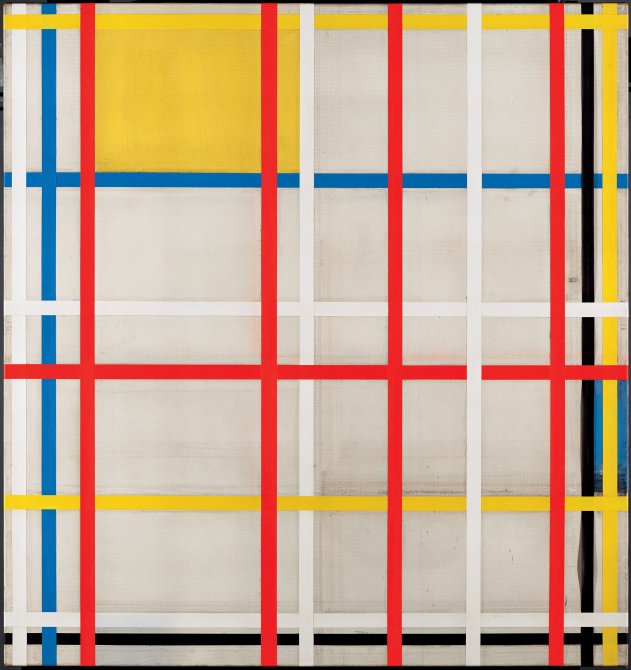
Piet Mondrian
New York City, 3 (unfinished)
ROOM 43
Together with Theo van Doesburg and Bart van der Leck (also represented in the collection) Piet Mondrian founded the De Stijl group during World War I. They published their theory on art in the magazine of the same name, proposing the creation of a universal art based on order and harmony with the aim of regenerating war-torn society. Through the opposition of horizontal and vertical lines and the use of primary colours (blue, red and yellow) Mondrian aimed to achieve balance and order.
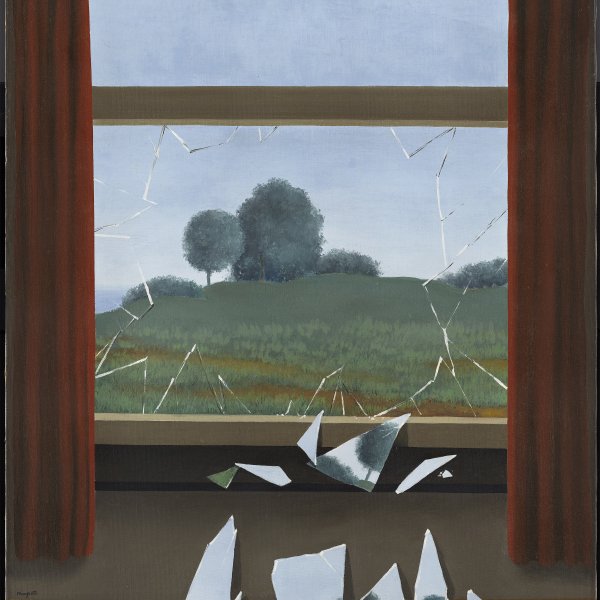
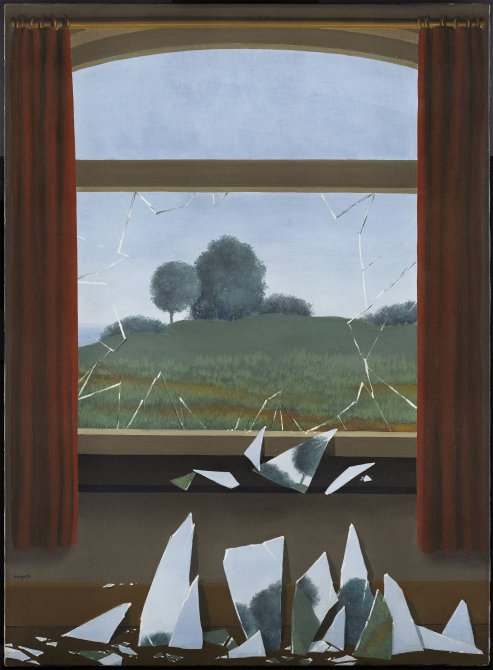
René Magritte
The Key of the Fields (La Clef des champs)
Not on display
The belgian painter René Magritte was associated with the Surrealists although he chose not to focus on the world of the subconscious. His works depict visual enigmas painted in a realistic manner that confuse the viewer. In the broken shards of glass here we see the landscape that is outside the window. In a letter to the Surrealist André Breton, Magritte wrote, “The principal aim was to eliminate the difference between what can be seen inside and outside the window.”
